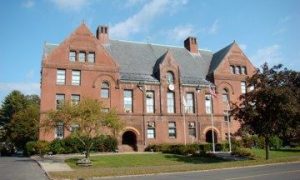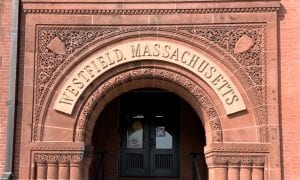WESTFIELD – The City Council approved the first reading of a $1,650,000 bond, requested by the Westfield Gas & Electric Department, to install a new metering system.
The council, at its Oct. 20 session, also voted 13-0 to reallocate $1.6 million remaining in a bond for use in the installation of the new automatic meter reading (AMR) system.
Dan Howard, WG&E General Manager, appeared before the Long-range Bonding Committee on Wednesday, Oct. 19, to present details of the AMR project.
“This project is long overdue,” Howard said at that committee meeting. “It’s something that needs to be done and is both cost-effective and prudent.”
Howard said that state law requires utilities to replace gas meters every six years, but that there is no similar requirement for replacement of electric meters.
Howard said the total cost of the project will be about $4.5 million, when the bond’s principal and interest are tallied. However, the project will result in cost avoidance and increased revenue.
“It is projected to generate a savings to our ratepayers of about $17 million,” Howard said.
The meters being purchased will send data directly back to the department’s operations center, giving the department real-time information on the use of power.
The meters also have the capability of transmitting data from both gas and water meters, providing feedback on consumption of both commodities.
The electric, gas and water data will be useful in detecting meter tampering and leakage, especially of water. The system will also provide a more accurate reading of electric, gas and water consumption, increasing revenue for the departments.
Water Resource Director Dave Billips, who was also at the committee session Wednesday, said that the department loses water in its distribution system. Some of that water is from leaks in the network of water lines, but a great deal is from defective and over-sized meters which under-record actual consumption.
“We have an unaccounted for rate of 18 percent and the DEP (Department of Environmental Protection) wants that below 8 percent,” Billips said. “Eliminating that unaccounted for water could translate into a 10 percent increase in revenue.”
“We’re working with Dan (Howard) because we need to see real time data,” Billips said. “We have over 10,000 meters and most of them are 20 years old or more. A lot of them are not sized correctly, many are too big, so we are not getting accurate consumption data.”
Several members of the City Council commended At-large Councilor Gerald Tracy, who serves as the council’s liaison to both the Water Commission and the Municipal Light Board, for bringing the two departments together on the meter project to increase efficiencies.
“I’d like to recognize the work Councilor Tracy has done on both the Water Department and the G&E (meter) projects,” At-large Councilor John J. Beltrandi, who is also a council liaison the the WG&E, said. “He’s been out in front of that issue.”
Tracy said that having the two departments work in partnership has cut the cost of the metering project by more than $2 million.
Tracy said this week that he would like to see the partnership between the WG&E and the Water Resource Department expand to both reduce operating costs and produce revenue.
“We need any investment that creates revenue, using city-owned assets, because we can’t continue to rely on state and federal aid,” Tracy said.
“To be a sustainable city, we have to generate revenue,” he said. “Renewable energy is a primary area to explore for opportunity to generate income.”
“Renewable energy is water, wind, and solar. The Water Department has the resources, water for hydroelectric generation, mountains for wind power, and land for solar power,” Tracy said, “while the G&E has the technical expertise and the ability to sell power generated here in the city.”
One possible project where the two departments could partner is the replacement of the city’s water transmission line from the Granville reservoir to the treatment plant in Southwick. That line drops through the Granville Gorge.”
“The G&E could partner on that project, which is replacing the existing line with a larger diameter pipe, and put several turbines inside the pipe to generate power as it falls through the gorge,” Tracy said. “We need an economic engine within those departments to create potential growth.”







